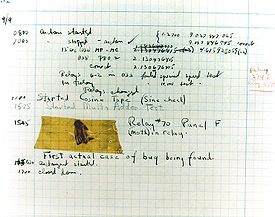Bugs and my bug ratings
Almost all software has bugs. Some bugs are due to poor design. Others are due to inadequate implementation. Word is more than 25 years old. Over the years it has accumulated more bugs than a Mortein ad [Lene Fredborg, 14-Feb-2020: Link to video removed - video no longer available].
This site used to show little bug symbols next to paragraphs describing egregious bugs.
I decided to expand this somewhat, with the help of bug images provided from the Microsoft clipart site.
On one hand, bugs are serious business.
On the other hand, the images are supposed to provide a bit of fun. Be sure to move your mouse over the little black bugs! (And if you're not using at least Internet Explorer 8 or at least FireFox 3 or another newish browser, you're not getting the full bug experience!)
My bug criteria
Broadly, these are my bug rating criteria:
-
5-star bug: This is a bug that causes damage, works seriously contrary to the documentation or seriously prevents me from doing my job.
-
3-star bug: This is a bug that prevents me from doing my job, and there is no workaround.
-
1-star bug: These are genuine bugs, not just annoyances. But there is a workaround. They demonstrate poor product quality, but don't actively prevent me doing my job.
As the years go by, most bugs get ingrained. Or they are re-classified as 'features'. Some get fixed, but not many.
But bugs, even bugs with known workarounds, waste developers' time and cost businesses money. In general, I reckon I find about 3 major bugs for each medium-sized Word development project I undertake. So I decided to try to document some of them in the hope that it will save someone else some time. I hope I live long enough to be able to edit many of these pages and note, for at least some of these bugs, "Fixed in Version 15!".
Debug
As a matter of trivia, the word "debug" to describe ridding computer software of bugs was coined by Grace Hopper. From the National Museum of American History:
American engineers have been calling small flaws in machines "bugs" for over a century. Thomas Edison talked about bugs in electrical circuits in the 1870s. When the first computers were built during the early 1940s, people working on them found bugs in both the hardware of the machines and in the programs that ran them.
In 1947, engineers working on the Mark II computer at Harvard University found a moth stuck in one of the components. They taped the insect in their logbook and labeled it “first actual case of bug being found.” The words “bug” and “debug” soon became a standard part of the language of computer programmers.

A photograph of the 'bug' that Grace Hopper and her associates found and logged for posterity, from Wikipedia.
Links
Click a link below to see a list of articles with bugs.
1 Star bugs
Articles with 1 Star bugs
3 Star bugs
Articles with 3 Star bugs
5 Star bugs
Articles with 5 Star Bugs


